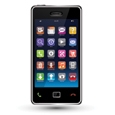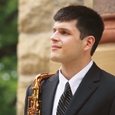
As technology available continues to become increasingly prevalent and user friendly, the benefits of incorporating selected apps into rehearsals grow ever more numerous. There are useful applications both for facilitating musical development and organization.
The most common and easily used technology is a tuning app, which can go a long way in fostering the improvement of the ensemble. Two in specific have a streamlined functionality that easily assists in the classroom. First, the Tonal Energy app is a combination tuner and metronome that has become popular. The interface displays intonation as a bull’s eye rather than the traditional sweeping needle. A green smiley face indicates a pitch is in tune, ideal for musicians of all ages. The app also includes a metronome and drone, which are extremely helpful. Additionally, the app offers a real-time graph of resultant sound. So, if you were trying to ask for space in the sound, you could consult the graph to see how quickly, and for how long, the space is occurring, by way of the graph.
Another good tuning app is Tunable. This application has a video game-style interface, where a stationary vertical line acts as the tuner. The resulting green or red bars on the screen indicate the intonation of the resultant sound. Lastly, the line will demonstrate the steadiness or unsteadiness of a student’s sound. This is ideal for showing vibrato or trying to teach the concept of a steady sound to visual learners.
Fun applications for facilitating musicianship are numerous, such the Chromatik app. This allows the exploration of free sheet music of popular melodies and traditional tunes, suited for any instrument. This is ideal for supplementing lessons or sightreading.
Another important app to consider is the Sight Reading Factory. This program generates short excerpts for sightreading. The key, range, and duration can be customized as well. Additionally, it allows the generation of unique material ranging from a single soloist to a large ensemble or choir.
Applications that improve organization can be valuable to music educators as well. One of the most functional of these is Evernote. This application allows you to compose lists, documents, or electronic journals, save the documents for further editing, and then resave changes as necessary. Additionally, the documents can be shared with a single person or a group of people. This is an ideal way, for example, to keep a lesson journal between yourself and a student, create a long term rehearsal plan for various ensembles, or communicate with an entire ensemble about administrative or musical elements.
Another effective resource is the Type on PDF app. This allows you to edit PDF documents, which sometimes do not permit this via traditional means. This software allows you to both type and move text, as well as draw. This is ideal for signing or filling out the mounting paperwork all musicians face, now simplified without need for a computer or printer.
Having some of your music library saved as PDFs can have many benefits in rehearsals. For example, if a student forgets or loses a part, it can now be read off of a tablet. Many apps, such as Cam Scanner, allow you to create a PDF simply by taking a picture of the document. This can be an immense time saver compared using a scanner. Because pages are captured with the camera of a mobile device, it is easier to make sure you are getting the entire page. It is important to take steps to protect the PDFs, via password protection or a locking feature, so the copyright remains secure.
These free applications are just some of the many available. Experimentation and research will yield the best results of implementing such programs.






